Data Brief 2021-030 | October 22, 2021 | Written and compiled by Leila Gonzales and Christopher Keane, AGI
Download Data Brief
COVID-19 Impacts on Geoscience Business Staffing, January – August 2021
Between January and August 2021, most businesses did not expect to make
changes in permanent staffing, continuing the trend from 2020. In
general, the percentage of employers expecting to increase permanent
staffing increased between January and July 2021, but this percentage
contracted sharply in August 2021, coinciding with the impact of the
Delta variant. Importantly, the proportion of businesses decreasing
staffing remained flat over the entire timeframe.
So far in 2021, temporary and contract staffing have been more variable
than permanent staffing plans with no distinct trend over the course of
the year.
Most employers reported COVID-19 not having an impact on staffing.
Active hiring began in earnest in April 2021, but faded with the
increasing impacts of the Delta variant. Interestingly, benefit and
salary reductions spiked at the beginning of 2021, but rapidly decreased
by April 2021. This timing aligns with the end of PPP loan coverage for
many employers and these adjustments may reflect necessary cost
reductions.
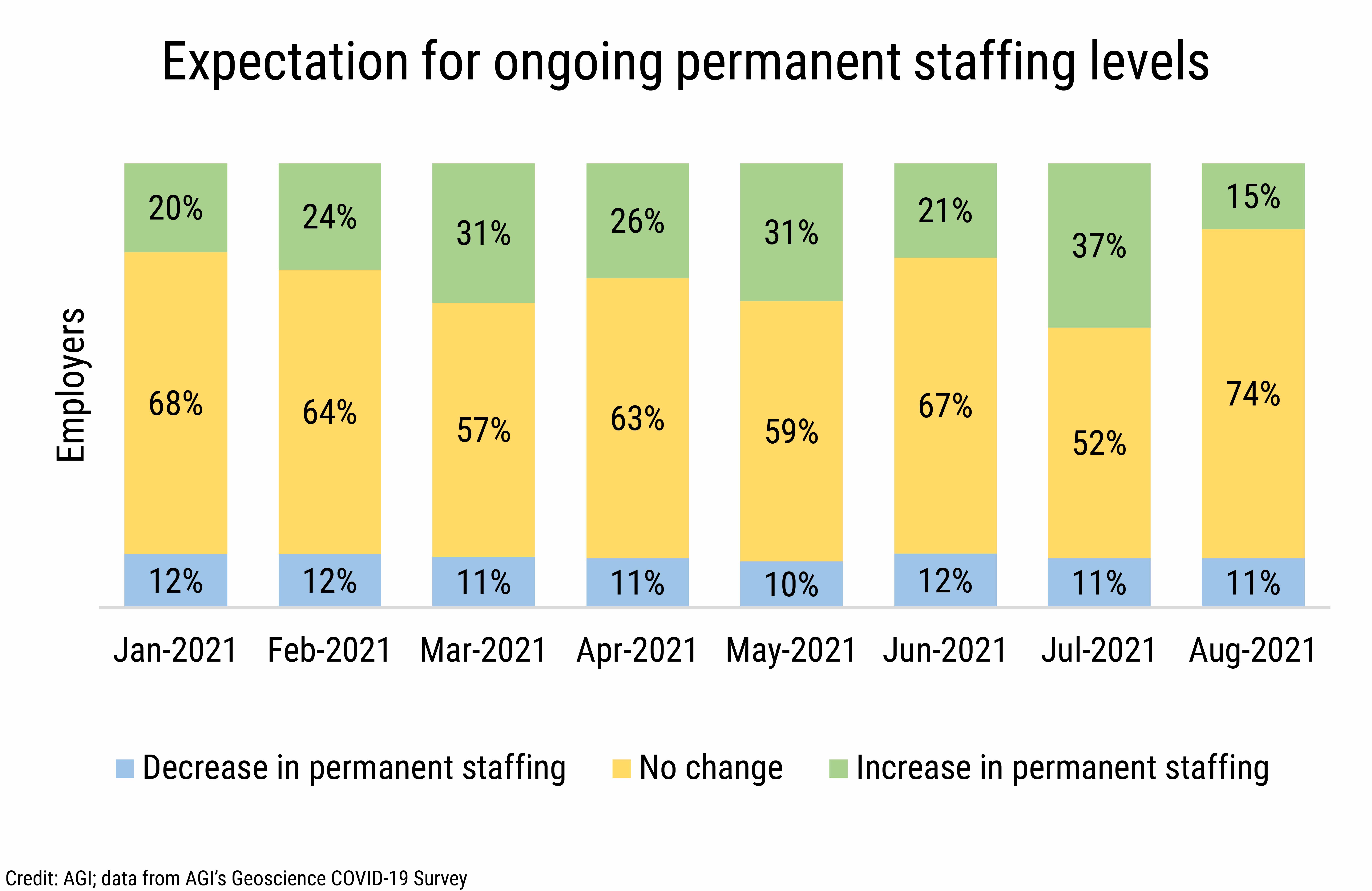
DB_2021-030 chart 01: Expectation for ongoing permanent staffing levels (Credit: AGI; data from AGI's Geoscience COVID-19 Survey)
AGI
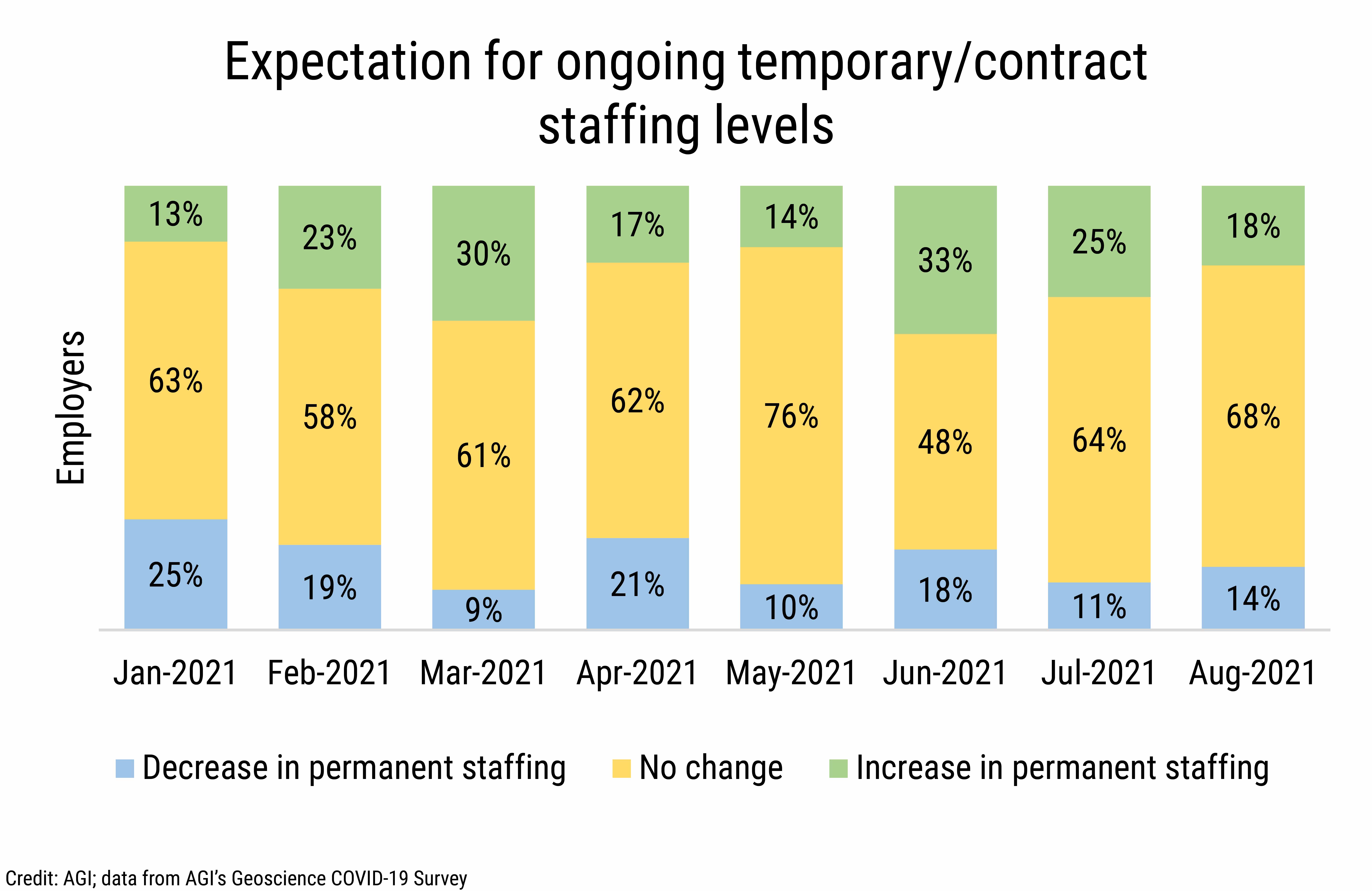
DB_2021-030 chart 02: Expectation for ongoing temporary/contract staffing levels (Credit: AGI; data from AGI's Geoscience COVID-19 Survey)
AGI
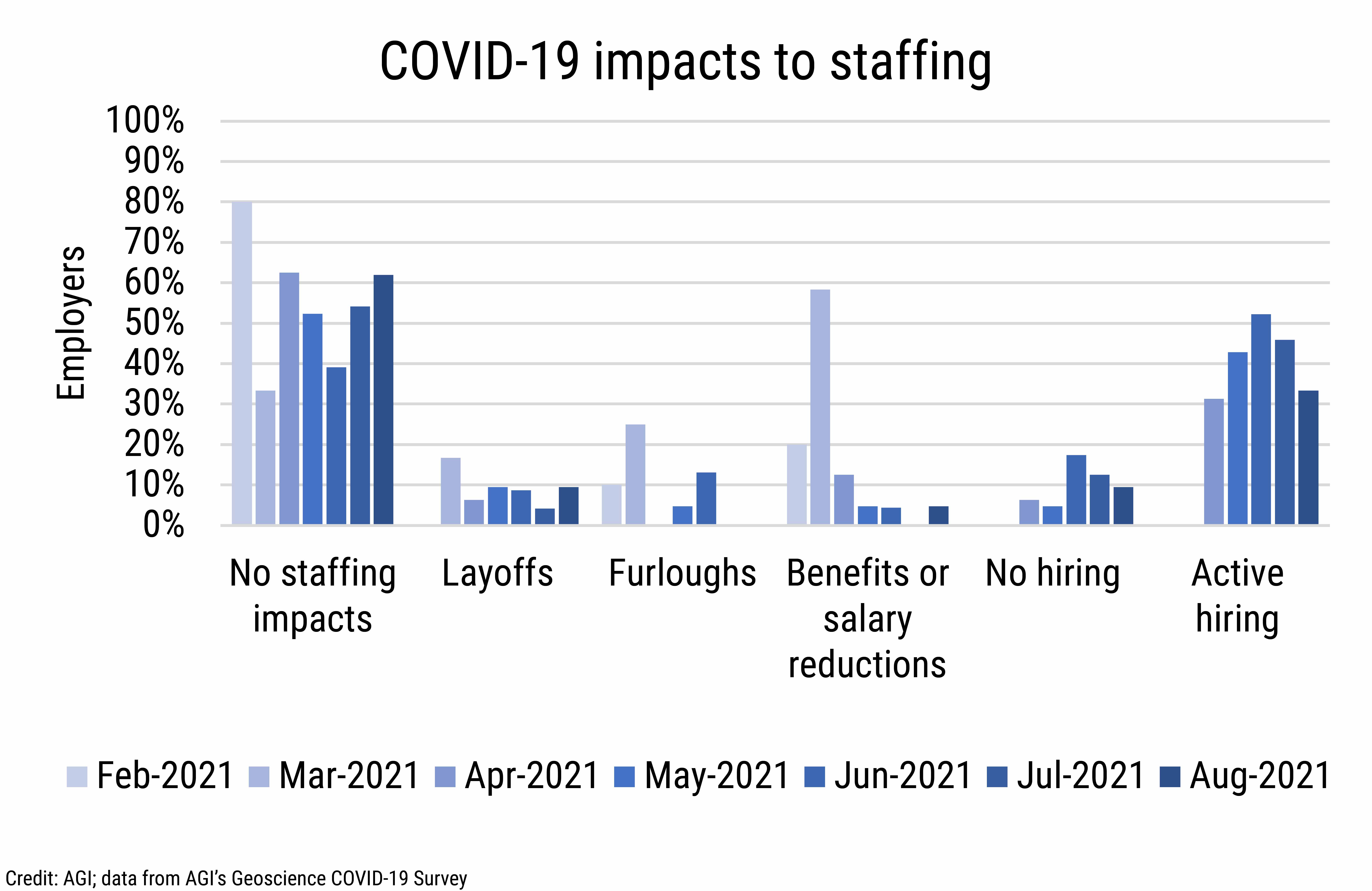
DB_2021-030 chart 03: COVID-19 impacts to staffing (Credit: AGI; data from AGI's Geoscience COVID-19 Survey)
AGI
Travel and Workplace Policies
The percentage of businesses reporting that their employees were either
on travel or working in the field slowly increased between January and
August 2021, with a distinct liberalization of constraint on
destinations. At the same time, institutional and government
prohibitions on travel declined from 28% to 18% between February and
August 2021.
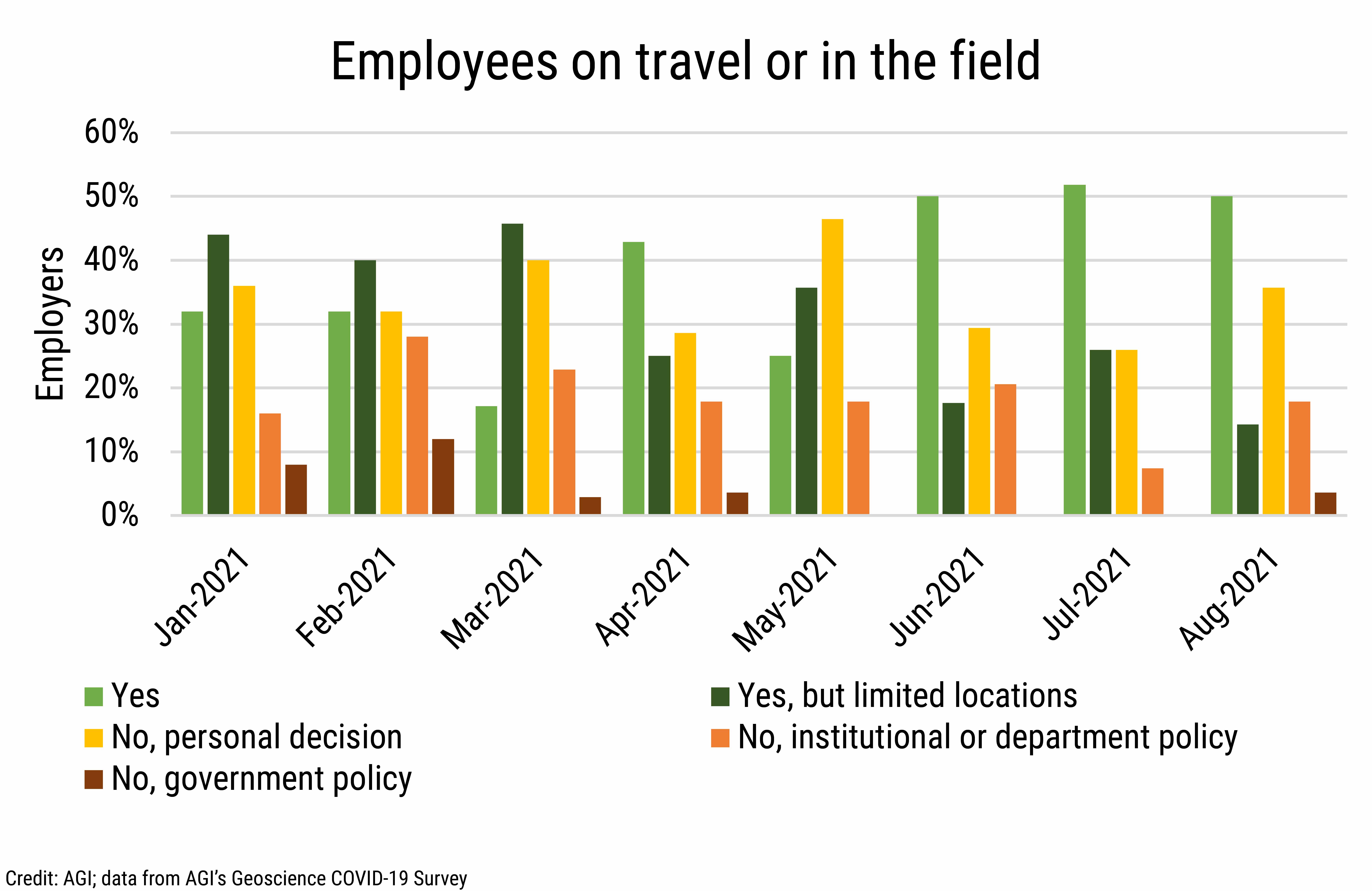
DB_2021-030 chart 04: Employees on travel or in the field (Credit: AGI; data from AGI's Geoscience COVID-19 Survey)
AGI
Work location
Workplace policies available to employees have shifted towards a split
mode of in-office and remote work. By August 2021, over half of
employers allowed at least some in-office attendance, over two-thirds
offered limited remote work, and nearly half of employers offered
permanent remote work policies to employees. Furthermore, three-quarters
of employers allowed fieldwork activities and site visits, and just over
one-third offered policies allowing access to lab facility access.
Between March and July 2021, employees shifted from primarily remote
work with limited in-person time to a much more diverse portfolio of
work environments, with remote work and full-time office being the top
work locations.
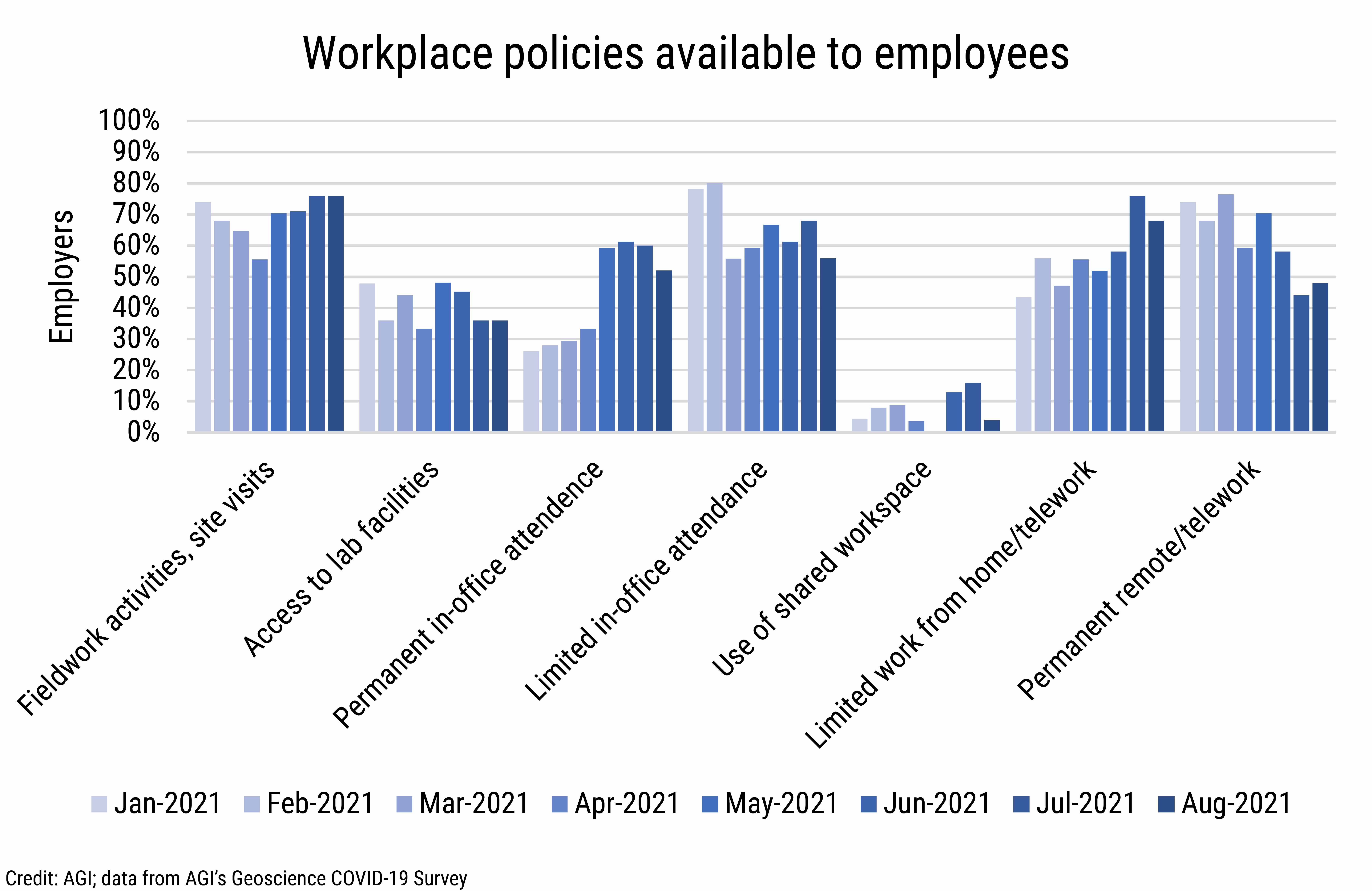
DB_2021-030 chart 05: Workplace policies available to employees (Credit: AGI; data from AGI's Geoscience COVID-19 Survey)
AGI

DB_2021-030 chart 06: Employee distribution by workplace environment, March 2021 (Credit: AGI; data from AGI's Geoscience COVID-19 Survey)
AGI

DB_2021-030 chart 07: Employee distribution by workplace environment, July 2021 (Credit: AGI; data from AGI's Geoscience COVID-19 Survey)
AGI
Hiring
The percentage of employers with active job openings was generally
around 40% through July 2021, but contracting sharply to 20% in August
2021. Actual hiring lagged job openings by a few months, with hiring
peaking between May and July 2021 at 64% to 67% of employers reporting
hiring geoscience talent. Employers reported primarily hiring full-time
geoscientists, with geoscience interns being hired during late Spring
through the summer months. Fewer than 20% of employers reported hiring
of geoscience contractors in June and July 2021.
Challenges in hiring talent has been widely reported across the economy.
This applied to the geosciences, especially through the first half of
2021. Beginning in July 2021, more than half of employers reported no
challenges to hiring. Recruitment was consistently cited as the biggest
challenge, with between 25% and 33% of employers citing a lack of talent
available to fill vacancies. Onboarding new staff has also remained a
challenge especially into a remote working environment. Changes to new
hire training and onboarding included a shift to virtual training by 42%
of employers. Funding and budget constraints related to hiring were more
prevalent issues in the first and second quarter of 2021 than in July
and August.
When asked about the skills and educational backgrounds of potential new
hires, 80% of employers indicated they hired geoscience bachelor’s
graduates, 87% hired geoscience master’s graduates, and 60% hired
geoscience doctorates. The top skills required by employers were field
skills and data visualization and mapping software, required by 33% and
27% of employers respectively. Project management skills were the most
preferred skillset followed by database management, programming, and
data visualization and mapping software. Machine learning, artificial
intelligence, and data science was considered not applicable by most
employers, even though 55% of employers noted that it is of increasing
importance to the profession. Other skills employers mentioned they
would like to see candidates possess included critical thinking skills,
experience with specific software applications, and experience with
managing and curating physical samples.
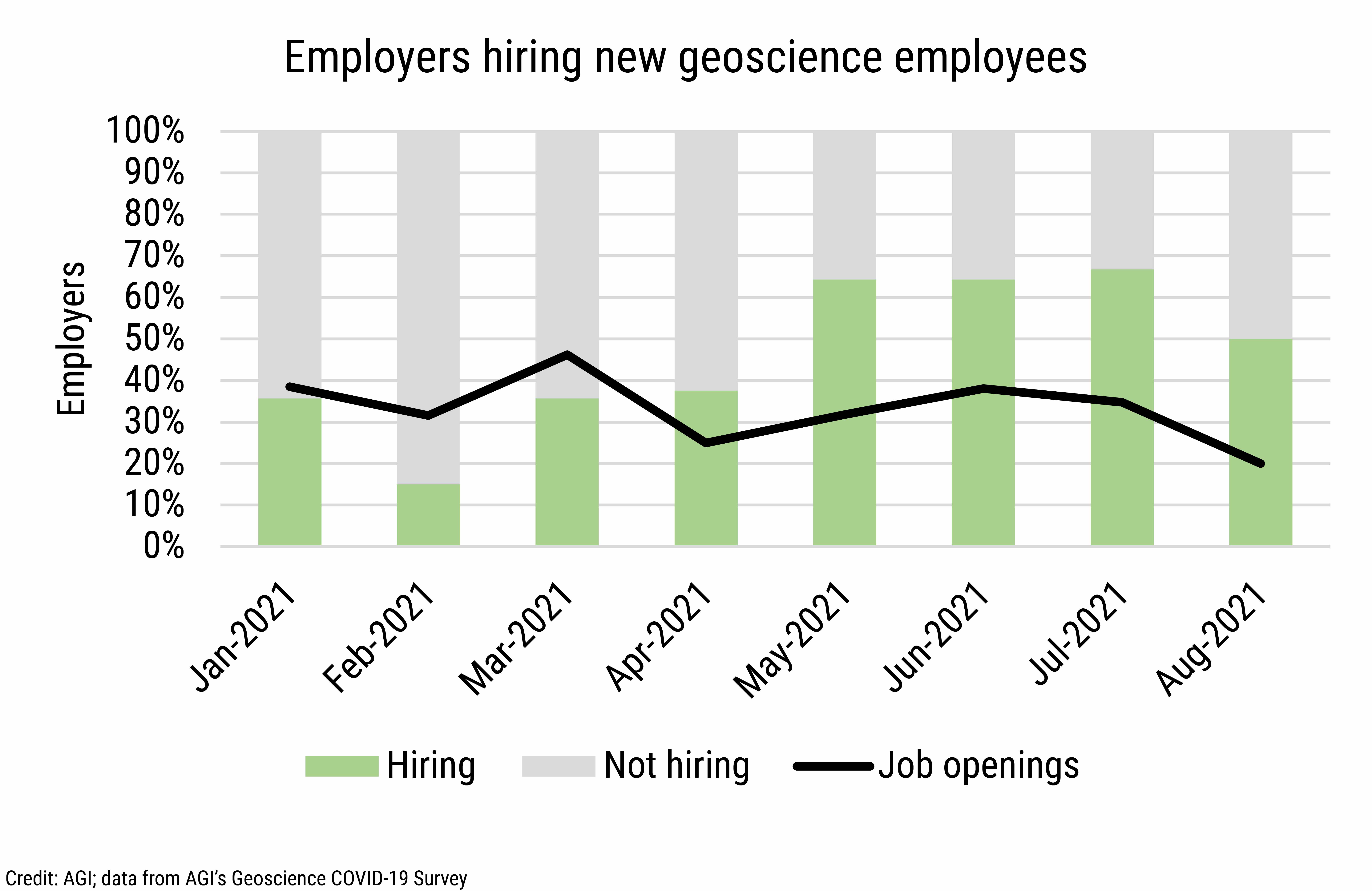
DB_2021-030 chart 08: Employers hiring new geoscience employees (Credit: AGI; data from AGI's Geoscience COVID-19 Survey)
AGI
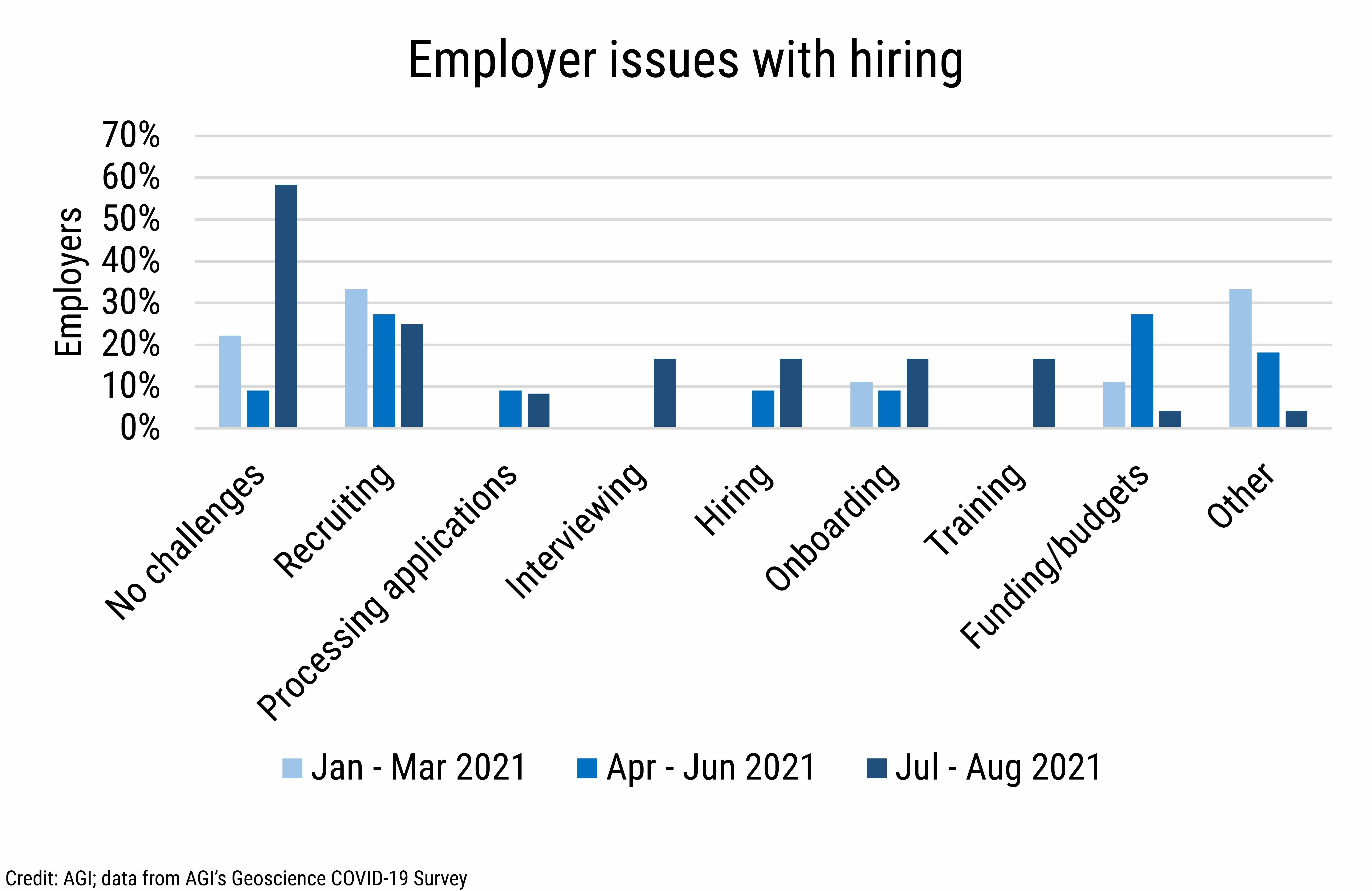
DB_2021-030 chart 09: Employer issues with hiring (Credit: AGI; data from AGI's Geoscience COVID-19 Survey)
AGI
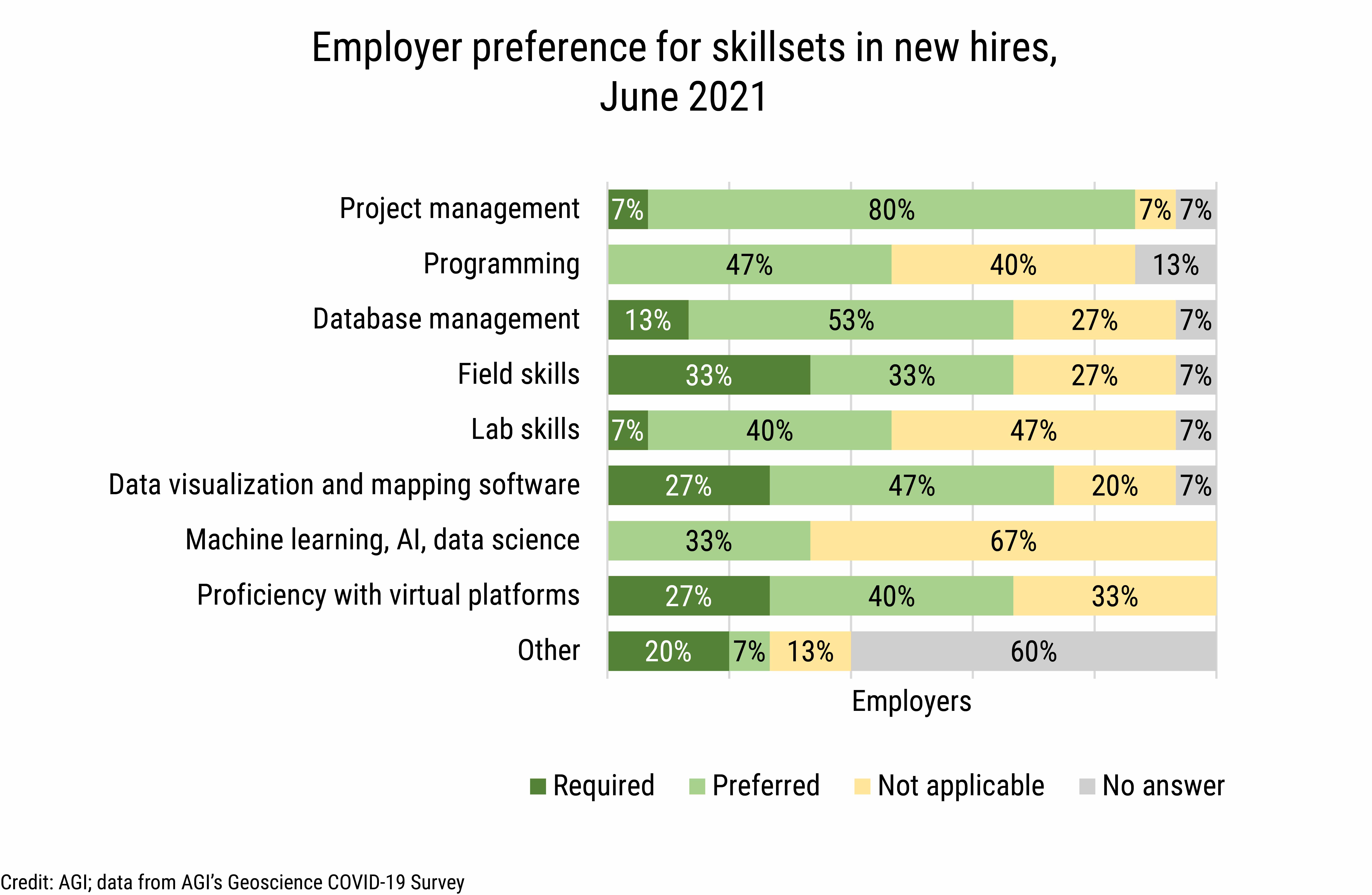
DB_2021-030 chart 10: Employer preference for skillsets in new hires (Credit: AGI; data from AGI's Geoscience COVID-19 Survey)
AGI
We will continue to provide current snapshots on the impacts of COVID-19
on the geoscience enterprise throughout the year. For more information,
and to participate in the study, please visit:
www.americangeosciences.org/workforce/covid19
Funding for this project is provided by the National Science Foundation
(Award #2029570). The results and interpretation of the survey are the
views of the American Geosciences Institute and not those of the
National Science Foundation.